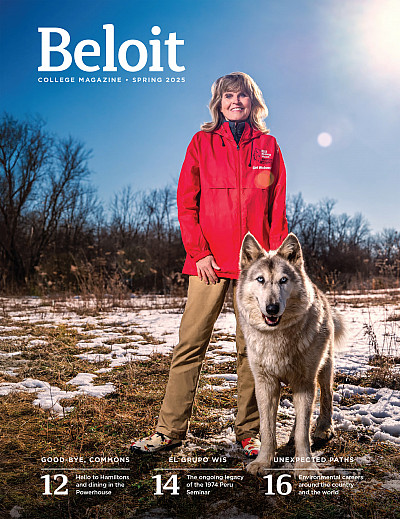The woman who runs with the wolfdogs
Susan Turner Vogt ’83 has created a sanctuary in Ohio for displaced, abused, and unwanted wolfdogs, improving their lives while encouraging compassion and humane treatment for these animals.
In December of 2013, Susan Turner Vogt ’83 received an email that would change her life. A friend’s husband, a mobile veterinarian, had been asked to euthanize a wolfdog discovered on the west side of Cincinnati in a vacant lot, tethered to a stake by a 30-foot chain. The animal, which had been abandoned, had not been neutered or socialized, living barely tended and alone outside, for the past six years. The dog was healthy, though, and the vet had a policy of not putting down healthy animals. But he couldn’t find anyone to take Porter, an aggressive-seeming wolfdog with a comely gray and white coat and hazel eyes; the few appropriate rescues were full, and most people are not equipped to take on such an untamed animal.
Vogt and her husband Colin Vogt, who had rescued dogs before, went to see Porter in the freezing rain. He snarled and backed away, terrified and guarding his turf. But he struck a chord in them, and they realized they might be his only hope. “Any animal on a chain is protective,” says Vogt. “They might look aggressive, but they’re just protecting what’s in the radius of their chain.”
Though the Vogts were dog owners, wolfdogs — creatures with a mix of gray wolf DNA and domestic dog DNA — were new to them. They agreed to take Porter anyway. “We said yes because we were ignorant, not knowing what we were saying yes to,” Vogt says. It was a rocky process. “We thought he could go in with our other dogs — we quickly realized that wasn’t wise. And that he could jump our six-foot fence,” she says. They kept him on his chain until they built an 11-foot-high enclosure with lean-ins on top and dig guards three feet deep.
For the first two years they were not comfortable around Porter. The Vogts had two young kids and three other dogs — and Porter didn’t know proper behavior for interacting with either group. It took creating that safe and secure enclosure, and two years of regular feeding, daily six-mile walks, gradual socialization, training, and lots of love until “somehow along the way we realized we were comfortable, and he became my best buddy,” says Vogt. “His challenges weren’t because of his wolf content, it was because of living on a chain. For the five or six people he became comfortable with touching him, he was the most amazing animal.”
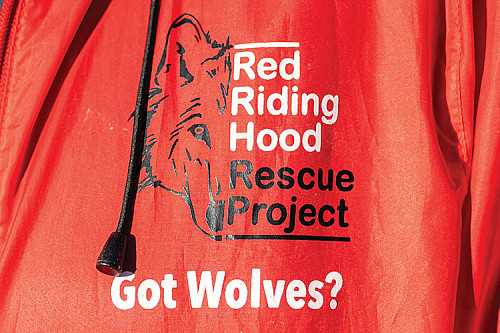
Life before wolfdogs
Vogt attributes some of the desire to rescue misunderstood animals to her liberal arts education at Beloit College. After growing up in the small Chicago suburb of Lake Forest, Illinois, Beloit expanded her mind. “It was an opportunity to get out of my conservative neighborhood and explore other thought,” she says. An English major, Vogt published writing in Beloit’s Avatar literary magazine and worked at WBCR. “Thinking out of the box was the biggest skill I took away from Beloit College,” says Vogt. “Really thinking, with no ceiling on what can be done. And that helped me with my career in defense recruiting, and now with these unpredictable animals that you must be constantly thinking one step ahead of.”
Right out of school she started in the field of recruiting, specializing in the defense industry, vetting potential hires for engineering, technology, and security jobs. She eventually opened Business Expo Experts, the largest job fair company for defense recruiting in America. She began it in a basement with a friend, ran it for 26 years, and sold the company in 2023.
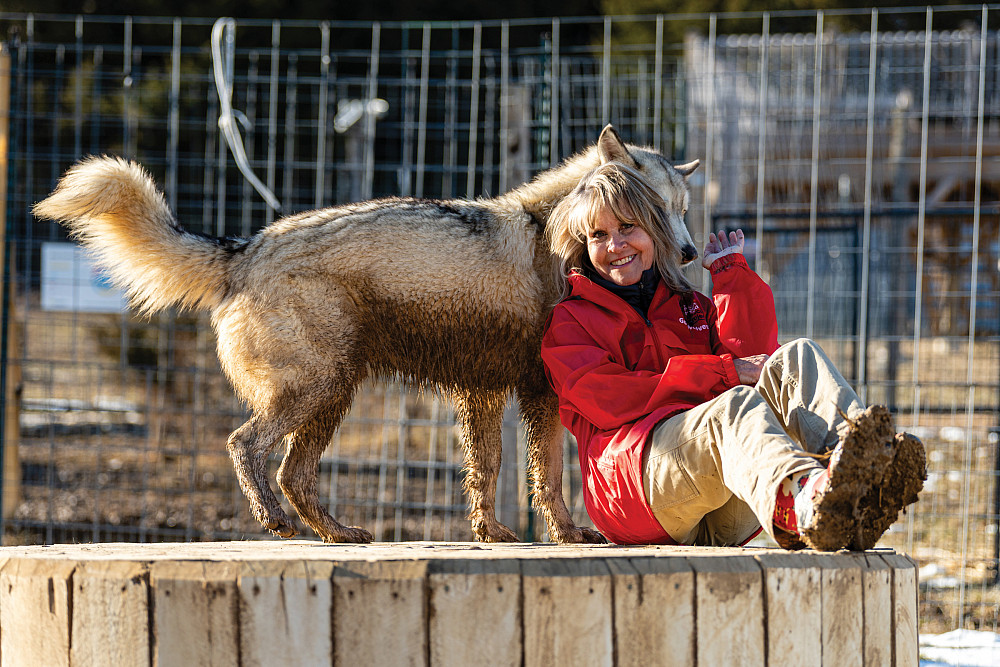
Credit: Michael Zero
When she opened The Red, Vogt was still running her company, but her passion for the sanctuary soon took over. “My heart had moved on … for the dogs!” she says. “I left the business I built and never looked back. I’m busier, dirtier, and unpaid now, but I love it.”
An education in wolfdogs
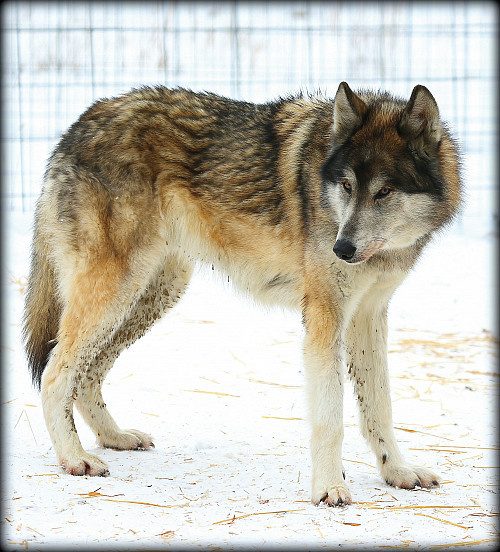
As for the “dog” in wolfdogs, most are northern breeds — Alaskan Malamute, Siberian Husky, German Shepherd, or a mix of those breeds. Vogt says that when you see a “wolf” in a feature film, you’re probably seeing a wolfdog or an Alaskan Malamute mix. “A lot of people think a Malamute is what a wolf looks like because of Hollywood.” She hopes her organization can help de-bunk negative notions about wolves. “They’re shy, not dangerous,” she says. “Hollywood makes them out to be villains. But really, wolves are afraid of anything new, and they’re not going to stalk or attack you.”
The Red uses Embark DNA testing to determine how much wolf is in their wolfdogs, which have three main classifications: low-content (49 percent or less gray wolf DNA); mid-content (50-84 percent gray wolf); and high-content (85 percent or more). The lower the content, the more dog-like the animals look and behave. Low-content wolf dogs may have blue eyes, a tail that curls up, and behave like a typical dog and enthusiastically greet you. The mid-content wolfdogs will be shyer, more timid, and more wolfy looking. And the high-content animals will look, move, and act like a wild wolf, sleek and shy, with no dog traits.
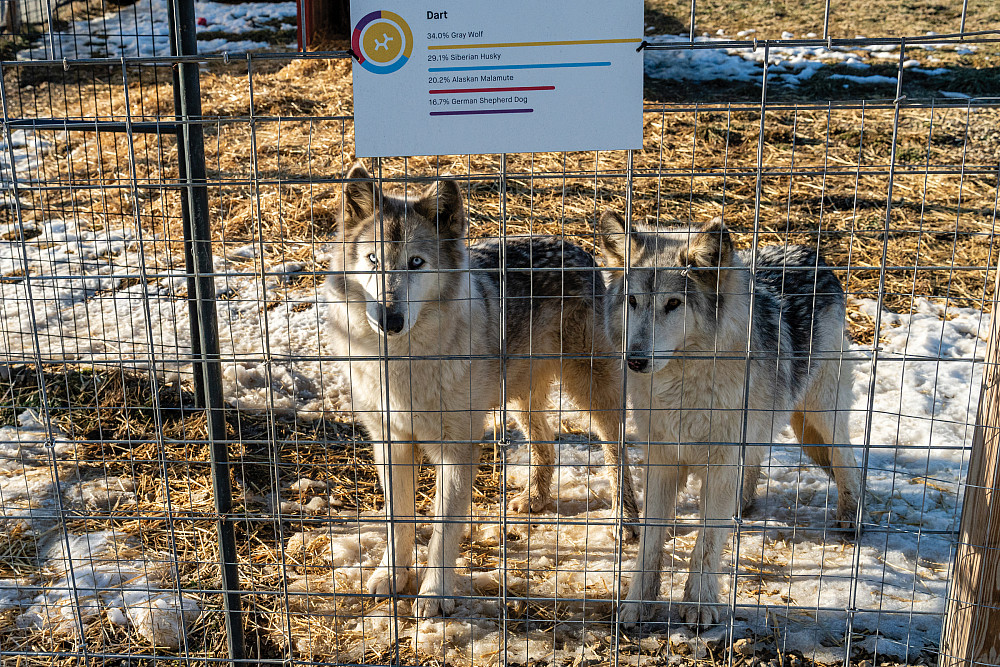
Credit: Michael Zero
The wolfdogs at The Red span the range, and include three high-content animals. Each has their DNA profile on a placard outside their enclosure to help educate visitors about the wolfdog spectrum. “People get a better picture of what a real wolf looks like,” says Vogt.
Where the wild things come from
Each Red resident has an origin story. Rougarou Charley, a mid-content three-year-old female from Louisiana, was abandoned by an abusive owner, then rescued by Tia Torres of the Animal Planet show Pitbulls and Parolees. Torres brought Charley to The Red herself in 2023. Though initially timid, Charley’s now a “social butterfly,” with an enclosure mate and the desire for pats from Vogt and other select humans.
In 2023, sisters Wiley and Willow came after they were spotted running wild in a Rhode Island coastal community after their owner abandoned them. Initially mistaken for black coyotes, their DNA tests revealed they were wolfdogs — and illegal in Rhode Island. They’re now settled Red residents known as “The 401 Girls” (after Rhode Island’s area code).
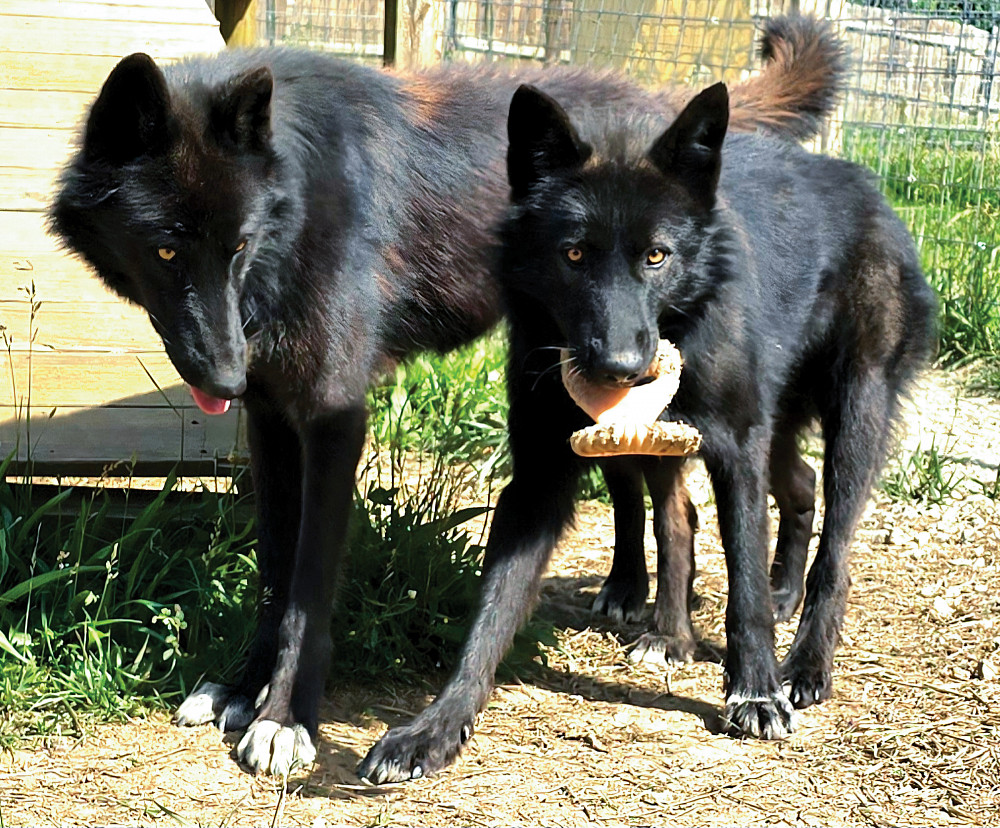
Credit: Douglas Glidden
The three most recent additions to The Red came in January 2025, rescued from a horrific fur and urine farm in Ashtabula, Ohio, where 420 wolves, wolfdogs, skunks, opossums, wild boars, and other animals were found suffering in unsanitary and cruel conditions. The Humane Society sent their emergency disaster team to save the animals that they could.
The Red is on the organization’s list of 14 approved animal rescues in the U.S. “It’s a feather in our little sanctuary cap because we’re so new,” says Vogt. She was able to accept three wolfdogs — once assigned numbers instead of names and neglected nearly to death, they’re now known as Dante, Zephyr, and Zoe. With the help of donors, volunteers from GE Aerospace Corporate (where Colin Vogt works as an engineer) built two new enclosures in brutal winter weather and an expanded perimeter fence for the young trio.
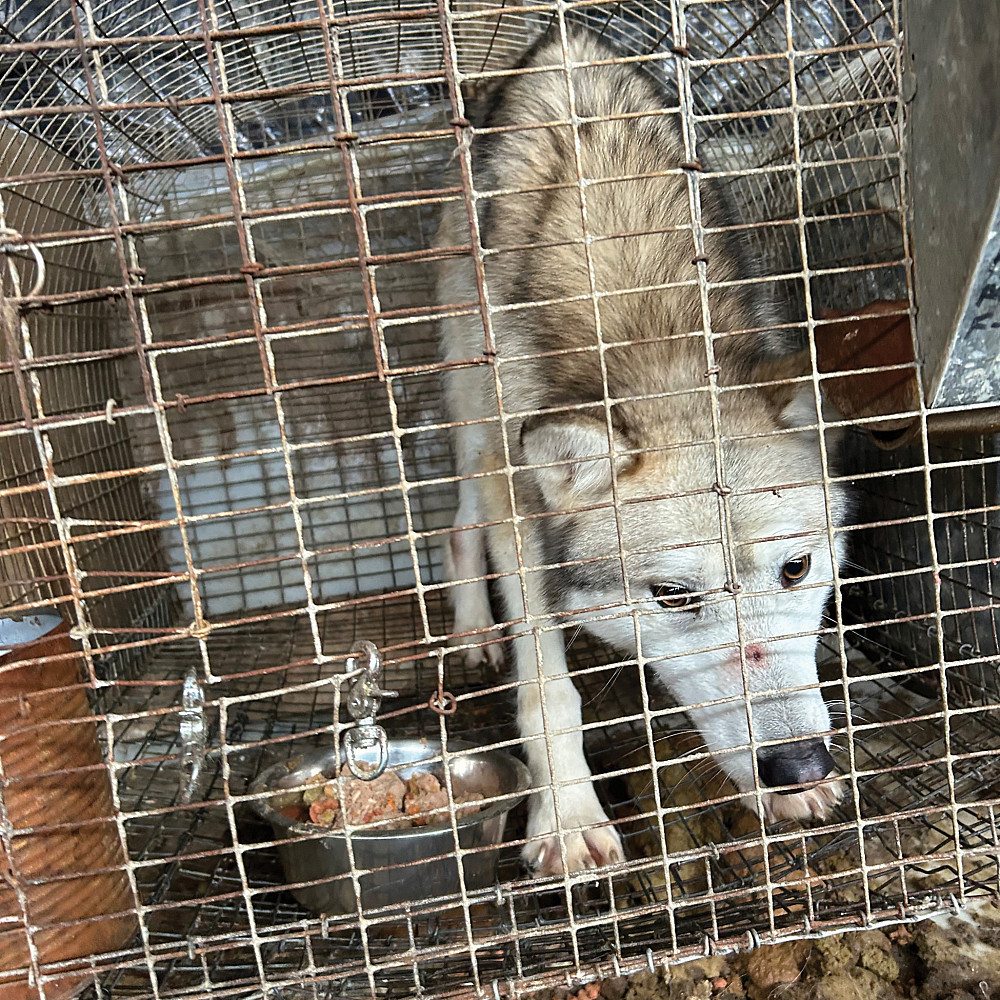
Credit: Susan Vogt ’83
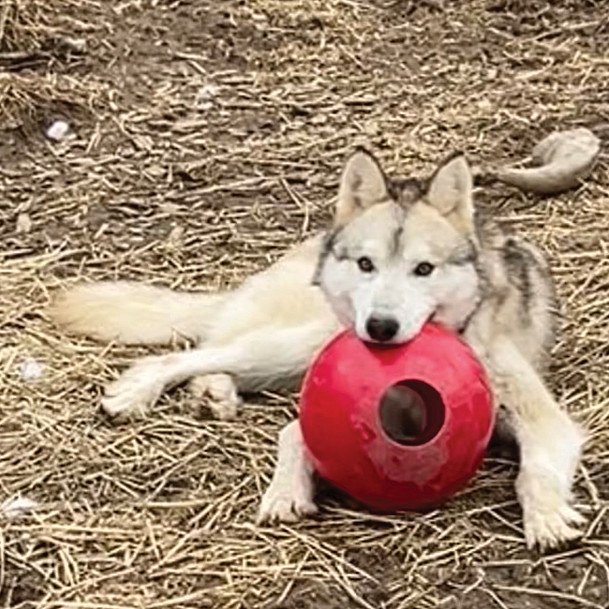
Credit: Susan Vogt ’83
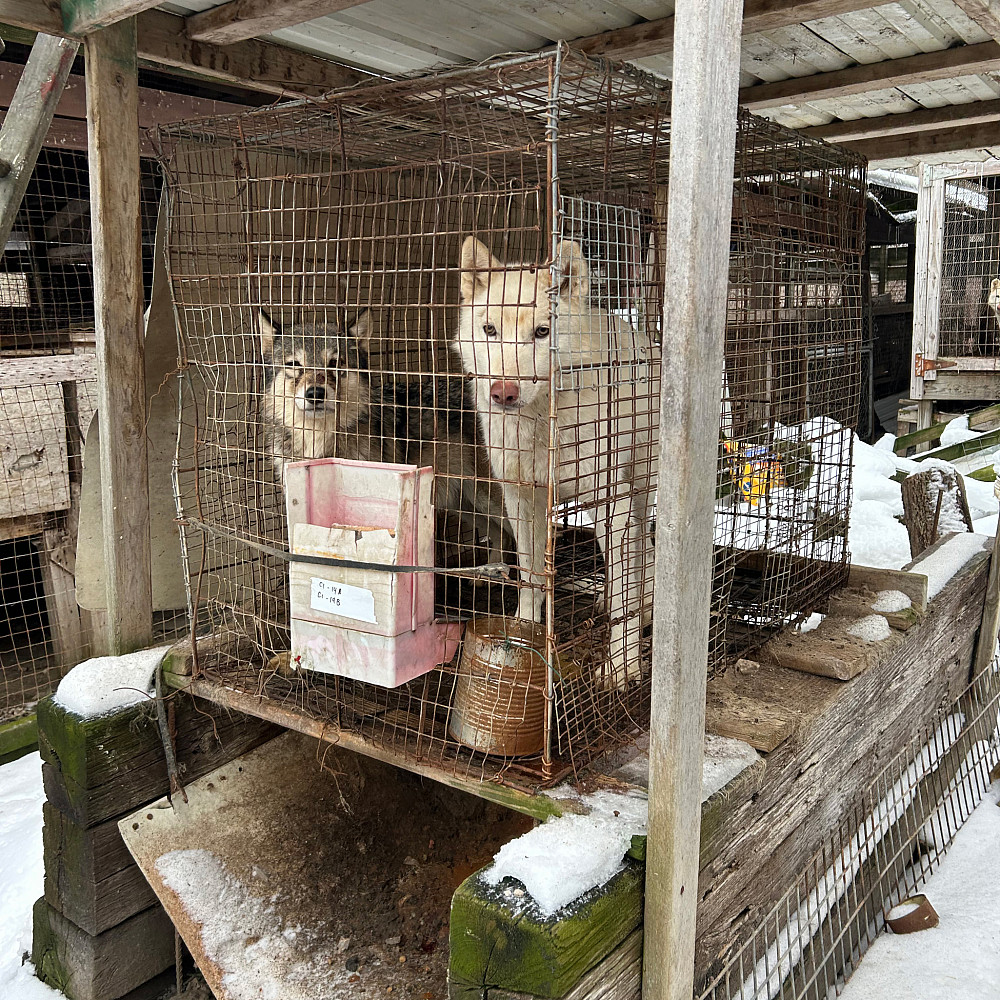
Credit: Susan Vogt ’83
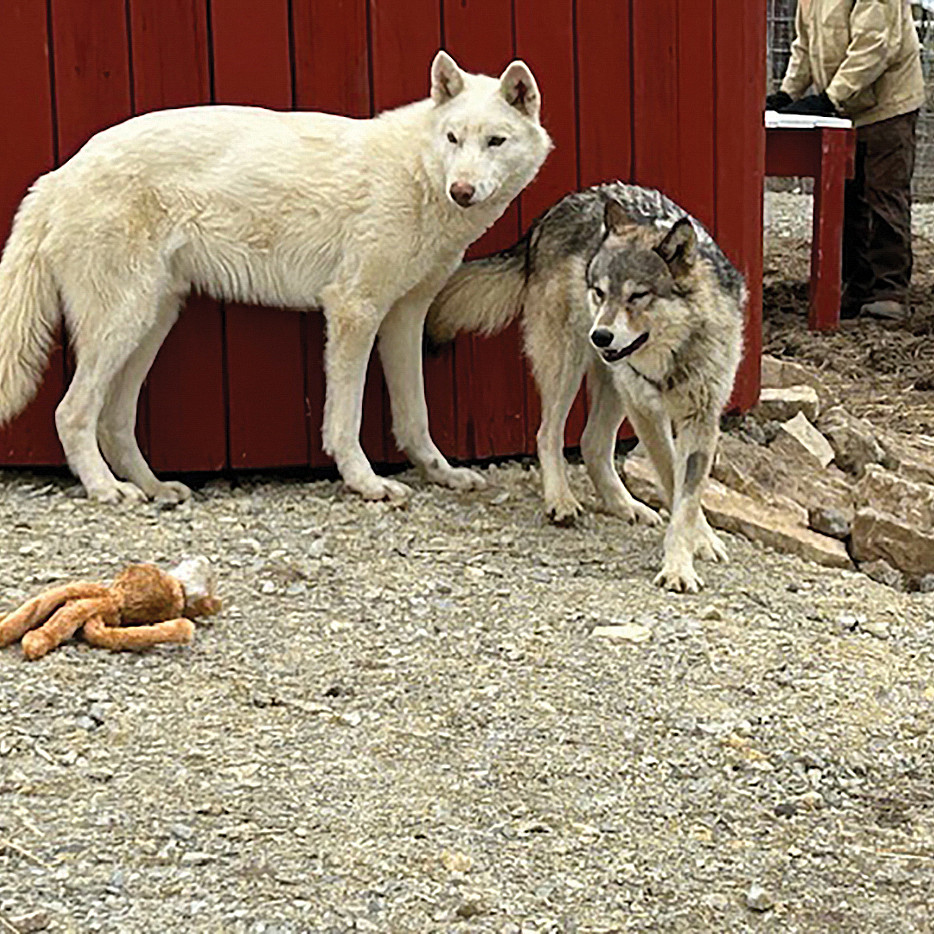
Credit: Susan Vogt ’83
Wolfdogs helping science
The unique mix of wolfdogs at The Red has attracted the attention of scientists, including Bridgett vonHoldt, assistant professor of ecology and evolutionary biology at Princeton University. She studies canine evolution, specifically the “happiness gene” that appears as wolves evolved into dogs, and The Red offered her blood samples for her research.
The Red also collaborated with Colgate University researchers studying the longevity of wolves — wolfdogs live 12 to 18 years, longer than most similarly sized dogs — building on research that found hybrid mammals have better large intestinal health than non-hybrids. The wolfdog’s intern caretakers collected stool and soil samples and took notes on their diets, and Vogt expects the Red’s residents will continue to further aid wolfdog science.
A day in the wolfdog life
When they’re not contributing to science, the wolfdogs start each day with breakfast around 8:30 a.m. On Mondays, Wednesdays, and Fridays — “raw days” — each pup receives a heaping, five- to six-pound bowl of fresh, raw meat. “Venison, chicken, fish, gizzards, heart, whatever lovely items,” says Vogt, are driven to them on a Gator Utility Vehicle. “When they hear the Gator, they know it’s raw day and they go crazy. The excitement as we drive out is sheer joy.”
All the raw day vittles are donated. A Cincinnati food bank gives meat that’s either slightly expired or has been left unrefrigerated for longer than is ideal for humans. Hunters donate scraps or last season’s frozen meat. This is helpful given that the wolfdogs eat about 650 pounds a month. Non-raw days are for high-quality kibble. Some of the younger and wolfier ones get extra meat, and others like Finn, who was on a necessary weight loss regimen, get less.
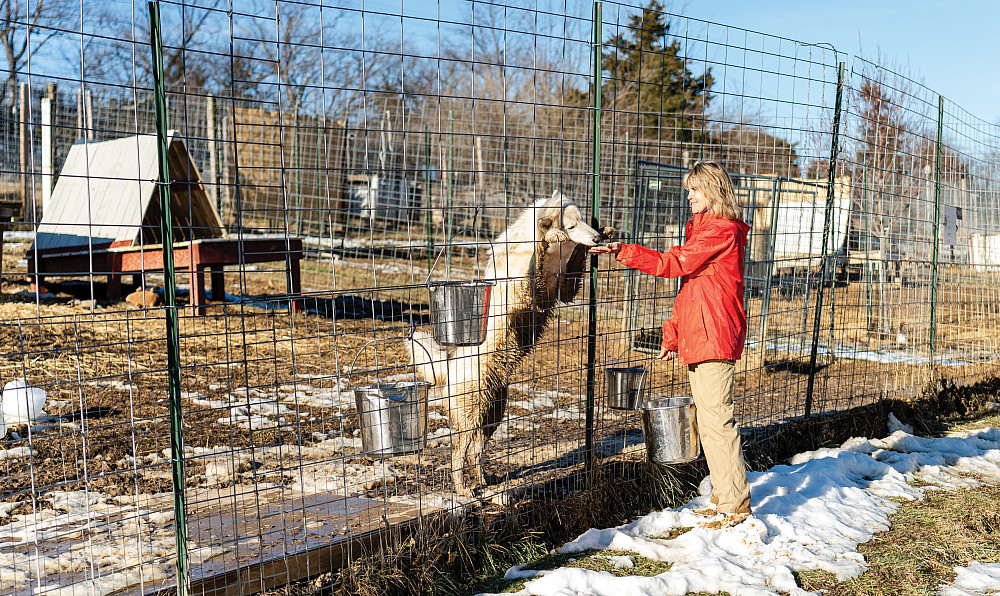
Credit: Michael Zero
The rest of the wolfdog day includes training for the trainable, water and wellness checks, and, of course, about six to eight spontaneous howling sessions that last one or two minutes. “It’s beautiful music,” says Vogt. “Somebody starts and it just kind of rolls through and reaches its peak and stops. Boom, it’s over.” The howling is usually kicked off by either Jackson or Bear, and then everyone else chimes in.
Cooperative wolfdog care
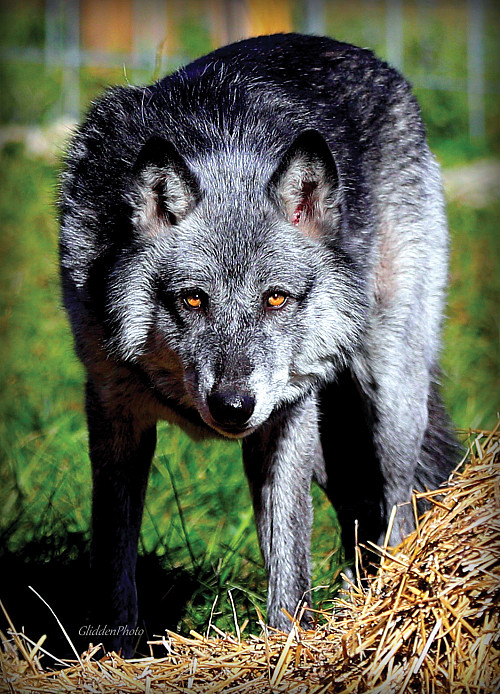
Credit: Douglas GliddenSome days veterinarians make enclosure calls at The Red. “You can’t just put a leash on them and walk them into a clinic,” says Vogt. They’re nearly finished building an on-site vet building. Sometimes the high-content wolfdogs need to be tranquilized for certain procedures. “Our vet tech who neutered Bear actually climbed the eight-foot fence and dropped down in to get a better angle to be able to better dart him,” says Vogt.
They also use “cooperative care,” which involves getting the animals’ consent for care. A wolf trainer from Wolf Park in Indiana does volunteer trainings. “The best zoos are offering cooperative care training,” she says. “He’s able to do an anal temperature and draw blood without muzzling,” she says. “It takes lots of practice.” The process begins with the animal touching the trainer’s hand, getting a treat, then working up to putting their chin in a wooden chin rest. “As long as their chin stays in the rest, that’s when you can start asking for additional procedures,” she explains. “It means they’re consenting.” If they pull away at any point, the person pauses and starts over. Not all The Red’s residents are able to participate, but that’s the goal. “We’ve been doing it for a couple of years and some animals are becoming rockstars,” says Vogt.
So, you want to adopt a wolfdog
Though four of the wolfdogs at The Red are adoptable — meaning they have pet-like attributes and can be leashed — Vogt expects they’ll likely stay with her. “They’re safe and getting everything they need,” she says. “We’re not looking to unload animals.”
Sometimes people ask if they can adopt one. “They’re dreamers — the wolf is their spirit animal,” says Vogt. “Or they live on a farm with acres and think the wolfdogs can roam free. No. No, they can’t. They’ll take care of your chickens. They’ll get shot.” The right adopter would need to live where wolfdogs are legal; have an appropriate enclosure; know how to train, exercise, and feed; and have access to a wolfdog-friendly vet.
“Don’t do what we did,” she says, “which is take a wolfdog and think, ‘okay, we’ve got a heart and that’s good enough.’ Because it was two years of struggle. It was a happy ending, but many people wouldn’t have persisted through the struggles we did.”
The wolfdog road ahead
In terms of funding, The Red is “100 percent donor funded, and 100 percent donor run.” It has received two grants. Local companies offer employees for community workdays. “I’m very blessed with the support we’ve found,” Vogt says. With an annual operating budget of $100K that goes entirely to the wolfdogs’ care, feeding, and housing, The Red is always looking for more support. You can help with donations; buying from their Amazon and Chewy wish lists; sponsoring a wolfdog; and buying merchandise. For Beloiters who would like to meet the wolfdogs in person, Vogt offers a personal tour of the facilities.
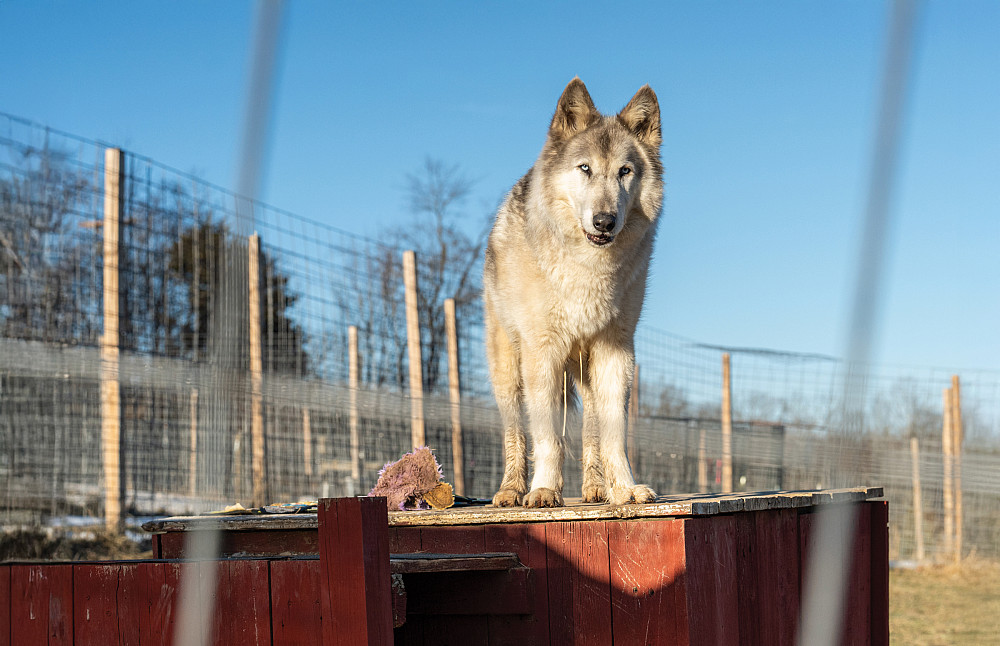
Credit: Michael Zero
Plans for The Red include finishing up the vet clinic, completing the renovation of an 1840s barn into an educational center, and eventually creating an annex on the far side of the property with extra-large wooded enclosures for the shyest wolfdogs. All of this is to improve the lives of wolfdogs and expand understanding about them.
Wolfdogs beyond The Red are vulnerable — one statistic says at least 65 percent of wolfdogs kept as pets are eventually surrendered and euthanized. They’re also still being bred and sold. Unethical fur and urine farms are still in operation, often torturing and neglecting the animals. There are currently no federal regulations related to the welfare, care, or slaughter of animals farmed for their fur. Vogt would like to teach the public about cooperative care training, safe capture, and create career opportunities for her interns.
With 26 wolfdogs at The Red and four in her backyard — and all of them howling in her heart — she wants people to appreciate the awesomeness of these animals. They’re smart, beautiful, and funny. “Their mind for plotting is remarkable,” says Vogt. “They might see something new hanging on your belt. And you can see they’re trying to figure out how to get it from you. Sometimes they win and it ends up in their den and — good luck. Hammers and Gatorade bottles have been stolen.”
They also create strong bonds and can be jealous. “They’re like toddlers,” says Vogt. “When they love you, it’s intense. They’re very selective in who they choose. And we can’t tell why one animal chooses me and another one doesn’t, but that’s what makes the relationship so special.” Just like with human animals.


